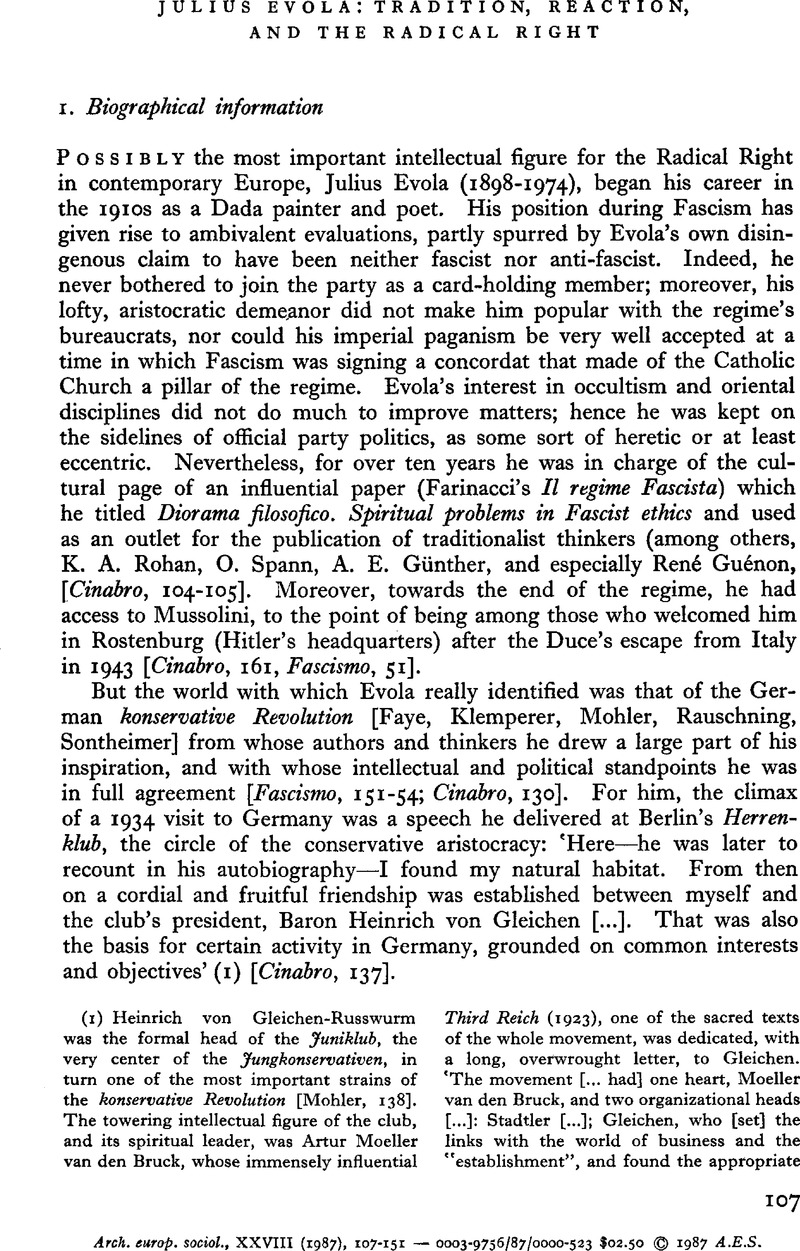Crossref Citations
This article has been cited by the following publications. This list is generated based on data provided by
Crossref.
IGNAZI, PIERO
1992.
The silent counter‐revolution.
European Journal of Political Research,
Vol. 22,
Issue. 1,
p.
3.
Eatwell, Roger
1996.
The Failure of British Fascism.
p.
99.
Bernstein, Henry
and
Brass, Tom
1996.
Questioning the Agrarians: The work of T.J. Byres.
Journal of Peasant Studies,
Vol. 24,
Issue. 1-2,
p.
1.
Brass, Tom
1997.
The agrarian myth, the ‘new’ populism and the ‘new’ right.
The Journal of Peasant Studies,
Vol. 24,
Issue. 4,
p.
201.
Griffin, Roger
2000.
Between metapolitics and apoliteia : The Nouvelle Droite's strategy for conserving the fascist vision in the 'interregnum'.
Modern & Contemporary France,
Vol. 8,
Issue. 1,
p.
35.
Hawkins, Mike
2000.
The foundations of fascism: The world views of Drieu la Rochelle.
Journal of Political Ideologies,
Vol. 5,
Issue. 3,
p.
321.
Schain, Martin
Zolberg, Aristide
and
Hossay, Patrick
2002.
Shadows over Europe.
p.
349.
Bhatt, Chetan
2012.
The New Xenologies of Europe: Civil Tensions and Mythic Pasts.
Journal of Civil Society,
Vol. 8,
Issue. 3,
p.
307.
Wolff, Elisabetta Cassina
2014.
Apolitìaand Tradition in Julius Evola as Reaction to Nihilism.
European Review,
Vol. 22,
Issue. 2,
p.
258.
de Orellana, Pablo
and
Michelsen, Nicholas
2019.
Reactionary Internationalism: the philosophy of the New Right.
Review of International Studies,
Vol. 45,
Issue. 5,
p.
748.
Bhatt, Chetan
2021.
White Extinction: Metaphysical Elements of Contemporary Western Fascism.
Theory, Culture & Society,
Vol. 38,
Issue. 1,
p.
27.
Ravelli, Galadriel
2021.
Narratives of neo-fascist transnational trajectories: travellers, warriors or ‘national-tourists’?.
Journal of Modern Italian Studies,
Vol. 26,
Issue. 3,
p.
333.
Betz, Hans‐Georg
2021.
The Blackwell Encyclopedia of Sociology.
p.
1.
Wilkins, John S.
2022.
Speciesism in Biology and Culture.
p.
95.
Pelizzo, Riccardo
and
Kuzenbayev, Nygmetzhan
2023.
BEYOND RELIGION.
World Affairs,
Vol. 186,
Issue. 4,
p.
978.
Timchenko, Andrii
2023.
«AUFSTAND» AS A SPECIAL TYPE OF PHILOSOPHER’S PROTEST.
Politology bulletin,
p.
37.
Guerra, Nicola
2024.
The radical Westernization of the European far right and the role of the Organisation Armée Secrète during the Algerian War.
Dynamics of Asymmetric Conflict,
p.
1.



